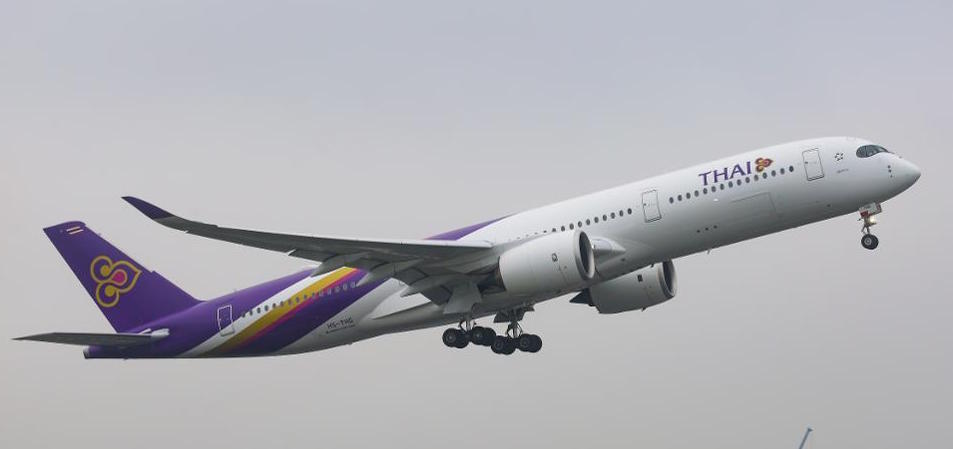Thai Airways Airbus A350 sank far below glideslope after shortened approach

German investigators believe a shortened approach route given to a Thai Airways Airbus A350-900 crew generated increased time stress, resulting in a botched high-speed descent to Frankfurt that took the twinjet far below the glideslope.
The aircraft, arriving at night, was just 668ft above ground, while still 6.43nm from the threshold of runway 07R, before it climbed away during a go-around.
German investigation authority BFU states that four pilots – the captain, first officer, and two cruise pilots – were in the cockpit. The cruise pilots were supposed to act as safety observers, and intervene if necessary, but neither pointed out to the operating pilots that the approach was too low.
The crew had been expecting to follow a preceding aircraft to 07R, and the approach route had been entered into the flight-management system.
But a passenger medical situation had developed earlier in the flight and, as a result, the controller feeding traffic into the ILS path gave it priority and issued the crew with instructions which shortened the approach, putting the A350 ahead of the preceding aircraft.
None of the four pilots in the cockpit responded as the A350 descended below the glidepath. The inquiry believes the medical event was not an emergency and did not justify the shortened route.
“This instruction exposed the flight crew to time stress,” says BFU, and the crew’s actions were subsequently “unco-ordinated” and resulted in “loss of situational awareness”. It adds that the orders of the first officer, who was flying, were “no longer clear” and “partially formulated as questions”.
While the approach path had to be adjusted in the flight-management system, to allow the vertical guidance to provide the correct path indication, the inquiry believes the crew incorrectly programmed the system, with a remaining distance “significantly longer” than the actual one.
“It is very likely that the indication on the [primary flight display] of the calculated vertical flightpath did not correspond with the mental image of the pilots,” it states.
BFU believes the crew thought the aircraft was far too high above the required approach path, and the first officer flew an open descent, extending the landing-gear, flaps and speedbrakes to lose altitude.
At about 3,000ft above ground the A350 passed through the glideslope from above, with a descent rate of around 3,000ft/min. The aircraft pitched increasingly nose-down, from 3° to 8°, and its airspeed rose.
Having previously overshot the localiser, with the approach mode not activated, the aircraft subsequently captured it at 1,820ft above ground with the descent rate increasing to more than 4,000ft/min.
Sink-rate and glideslope warnings were triggered at 1,340ft – the aircraft was far below the glideslope and still descending at nearly 3,400ft/min – but a go-around was not initiated until the aircraft was just 936ft above ground. It sank a further 184ft and was 688ft above terrain, 4.1 dots below the glideslope, before it started gaining altitude.
The aircraft conducted a second approach to 07R and landed without further incident. Cockpit-voice recorder information shows no discussion of the aborted first approach took place before the second attempt to land.
None of the 306 passengers and 18 crew members was injured and the jet (HS-THF) was undamaged during the 1 January 2020 occurrence.
All four cockpit crew members were experienced, and the captain and first officer respectively had 400h and 1,500h on the A350.
BFU says that, during interviews, the two pilots “did not give a statement” after being asked to explain the low approach.
The two cruise pilots were also interviewed, the inquiry adds: “They were asked whether they had realised that the aircraft had been too low during the approach, and had they given guidance to the two pilots. Both questions were answered in the negative.”
Investigators point out that, along with the incorrect programming of the flight-management system, the first officer changed modes on the flight-control unit several times, resulting in operating errors.
BFU also indicates that the captain had difficulty understanding and communicating in English, with problems comprehending the Frankfurt controller’s queries about the medical situation, and with following the conversation during investigators’ interviews. flightglobal.com
